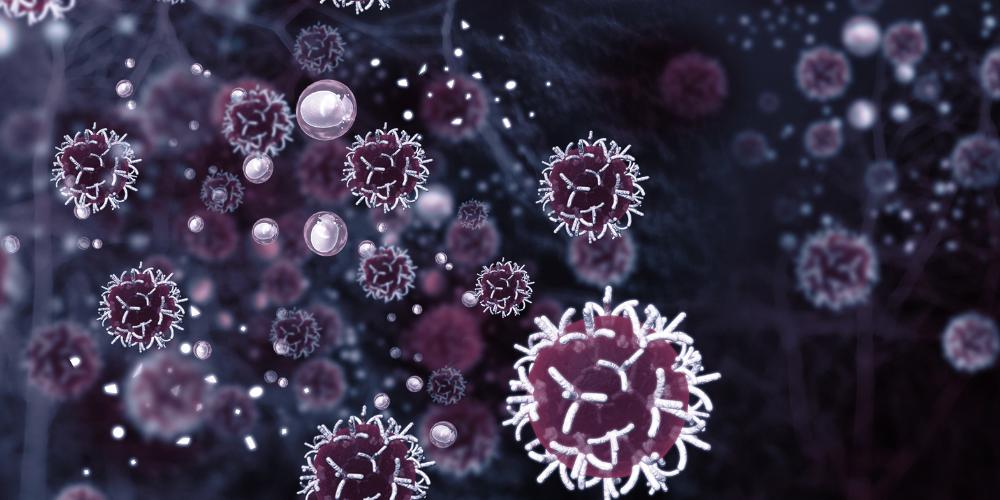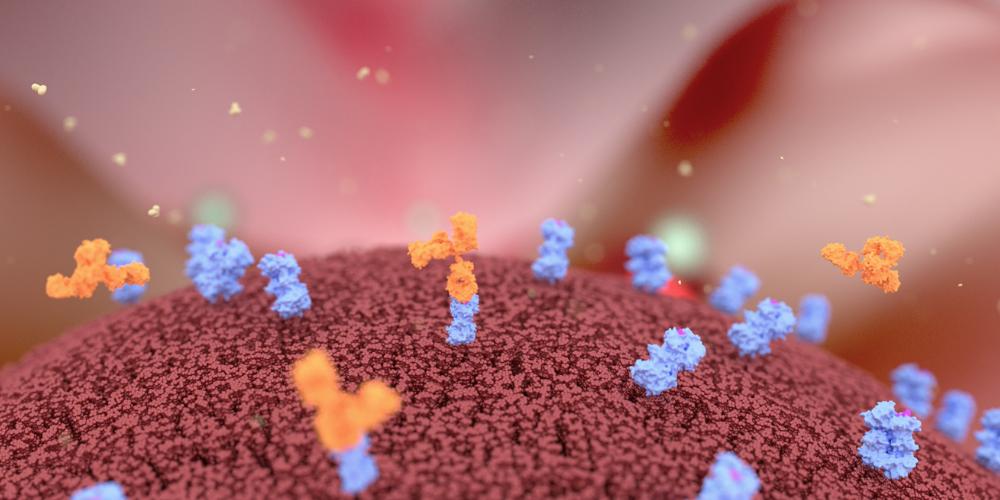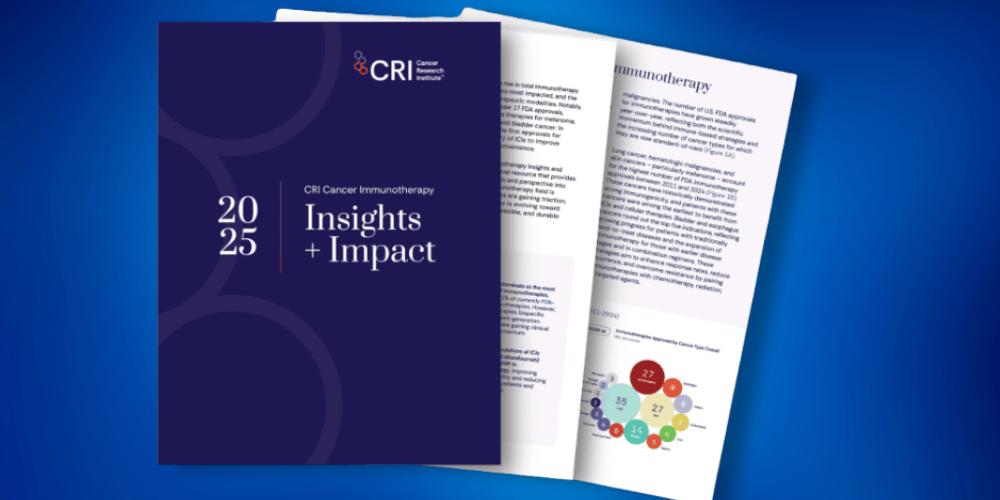How Circulating Tumor DNA is Being Evaluated as a Potential Endpoint for Immuno-Oncology
Jeff Allen, PhD, President and CEO of Friends of Cancer Research, discusses how the organization’s ctMoniTR project is evaluating the use of ctDNA as a potential endpoint, by aggregating data to provide a roadmap for future use in clinical trials.

What specific gap in endpoint strategy could ctDNA fill?
We've been most interested in its potential application as a drug development tool and specifically as a potential endpoint able to determine whether a drug is effective earlier than currently available measures. As treatments get better, the length of the clinical trial to evaluate the efficacy of a new drug can be significant.
There are other potential applications as people understand the biological implications of ctDNA and how they relate to clinical management, practice and drug discovery. That can range from characterization of a tumor, as you would think about a genomic analysis from traditional biopsy or be an indicator of whether patients are at higher risk for disease progression or even evaluating recurrence.
In the ctMoniTR project, what were you measuring in ctDNA change?
In this particular project, ctMoniTR, we look at a percent change in ctDNA levels following treatment initiation compared to baseline (pre-treatment) levels. This approach serves as a common metric able to be normalized across a number of different assays.
Given the data that we're using are from retrospective trials, going back and re-evaluating the samples with a different assay is not exactly feasible. Therefore, we are hoping to use the common denominator of a percent change from baseline, despite the variation that may be occurring based on the different properties of the assay.
"As treatments get better, the length of the clinical trial to evaluate the efficacy of a new drug can be significant."
What were you hoping to achieve with this project?
Some of the early information about the potential for ctDNA to be an early indicator of drug benefit was done in exploratory trials with relatively small patient populations. The ultimate goal was to create a larger sample size to be able to do additional statistical analyses on the use of ctDNA and its association with outcomes.
In the first prototype, we aimed to identify the methods and analyses that would be needed for a retrospective dataset in order to normalize some of the differences between the different trials.
What did you accomplish with the first prototype in the project?
In the first prototype, which looked at five different recently completed trials in lung cancer, we were able to delineate a methodology to come up with common metrics and identify time windows that we could evaluate.
As we expanded into the next step of the project, we partnered with a number of investigators and companies to identify nearly two dozen trials with the necessary data elements. These trials were grouped into three separate modules for analysis. The first module looks at targeted therapy, specifically in lung cancer treated with tyrosine kinase inhibitors.
The second module consists of trials of lung cancer treated with immune checkpoint inhibitors either with or without chemotherapy. In 2025, we hope to be able to evaluate the last remaining module that will include trials consisting of several different solid tumor types.
How many trials have you pooled data from?
At this point, we've aggregated over 20 clinical trials that include data from ~3000 patients. It has been well-studied that different tumor types and stages of disease have different baseline measures of ctDNA and they have different rates of shedding of ctDNA.
Therefore, it’s important to work out characteristics of tumor type, drug mechanisms, and impact on the molecular response rate through ctDNA.
"We're still seeing a significant correlation between a reduction of ctDNA within the first 10 weeks of therapy to improvements in overall survival."
Has anything stood out to you as significant?
One of the first things that caught our attention was, despite the variability that existed between the different trials that we've aggregated, we're still seeing a significant correlation between a reduction of ctDNA within the first 10 weeks of therapy to improvements in overall survival. The association of molecular response rate with outcomes has been able to overcome the variability both in time and assay performance.
I think it speaks to the potential connection between ctDNA change as a potential indicator for long-term benefit, but parameters must be worked out as to how to optimally incorporate ctDNA evaluation into prospective trials moving forward.
What would you like to see from sponsors in trials moving forward, to help in your work in studying ctDNA’s utility in treatment response?
It will be critical to have some uniformity, at least in the core metrics around evaluating ctDNA, in order to ultimately do the evaluations that will be necessary to evaluate it as an intermediate endpoint. Some of that has been well-articulated by the FDA around the types of methodologies and the meta-analyses needed to be done in order to sufficiently validate an endpoint like ctDNA change.
No one organization is likely to develop a portfolio of trials that would be able to support that level of assessment. It has to be done in partnership and in a coordinated fashion.
Therefore, the purpose of the ctMoniTR project was to lay the foundational evidence to arrive at best practices and data-driven conclusions of standardization in assay performance, collection time, rates and magnitude of change.
Does the work you’re doing in treatment response have impact for other potential uses of ctDNA?
We hope it can be quite informative to other potential uses of ctDNA. ctDNA is already being used in some context in clinical trials, such as patient selection, but establishing the clinical correlation between ctDNA change and long-term outcomes will be important.
There'll be slightly different analyses and different data that may be necessary to evaluate, for example, how to handle a change in ctDNA on an individual patient level. We have been working from a clinical trial level to understand if ctDNA can be an earlier evaluation than traditional RECIST by imaging or for long-term clinical outcomes.
Establishing that clinical connection will be important to help inform what those studies need to look like to better characterize additional uses of ctDNA as a measure in clinical practice and drug development.
"There is the need for earlier indicators of success for new drug candidates, to improve clinical trial efficiencies and get answers sooner."
Where are we in the overall journey of ctDNA’s maturity as a tool for drug development?
It depends on the context of use.
Within the last year, FDA has issued guidance and had advisory committees around the use of ctDNA, specifically termed as “minimal residual disease,” in myeloma. That has been evaluated for a number of years to understand if a drug is effective. Recognizing those clinical connections has allowed people to explore other applications of ctDNA, both in drug discovery and clinical care.
There has been more research in the hematological space, but the technologies continue to advance so rapidly. Now, there are numerous different instruments and diagnostic tests that can evaluate any number of properties associated with ctDNA, such as its presence or any specific molecular alterations.
What’s driving the recent advancement in ctDNA as a drug development tool?
One aspect is that technology is providing the capability to measure and interrogate even very low concentrations of ctDNA from the blood, without subjecting patients to traditional biopsies, long procedures or frequent imaging.
Another is that there is the need for earlier indicators of success for new drug candidates, to improve clinical trial efficiencies and get answers sooner. Because of the success of different therapies and advancements made for various cancer types, clinical trials are taking longer and longer to reach the evaluation of the clinical endpoint.
Specifically for the IO space, why is this important?
Immuno-oncology space is a promising area for ctDNA, particularly in the immune checkpoint inhibitor space. We’ve seen how these trials have clinical benefit, but evaluating overall outcomes takes a long time due to the success of these types of treatments.
On top of that, we're seeing that the greatest potential for many of these agents is moving into earlier lines of treatment where the immune system and tumor may be able to be more responsive to treatment. That means that the duration necessary to understand effectiveness takes longer as well.
The use of ctDNA as a potential endpoint in early disease states has potential to understand whether or not a therapy is effective without having to conduct trials for multiple years before its possible to measure overall outcomes. Use of ctDNA is not meant to replace an endpoint like overall survival, but it can be an early indicator if we can determine whether molecular response of ctDNA is correlated to long-term benefit.
What do you see next for pharma if ctDNA becomes a more prominent endpoint?
Incorporating additional data collection into any trial comes with its own resource and logistics considerations for the trial, sites and participants. We have to be cognizant of that. However, the ctMoniTR project has been a remarkable partnership on all sides – industry, academic, advocacy, regulatory – in working through some of these challenging questions.
We know the challenges, time considerations and resource intensity of current clinical trials continues to increase. A positive step would be to introduce efficiencies to trials. Having some of these early indicators of drug activity is one way of introducing efficiency.
It will remain to be seen how much information about ctDNA from the ctMoniTR project can be extrapolated to other tumor types and other uses. But I hope that this can be a foundation or roadmap on how to generate the type of evidence needed to validate ctDNA as an endpoint and could be used as a model to inform future research endeavors.
In This Article








